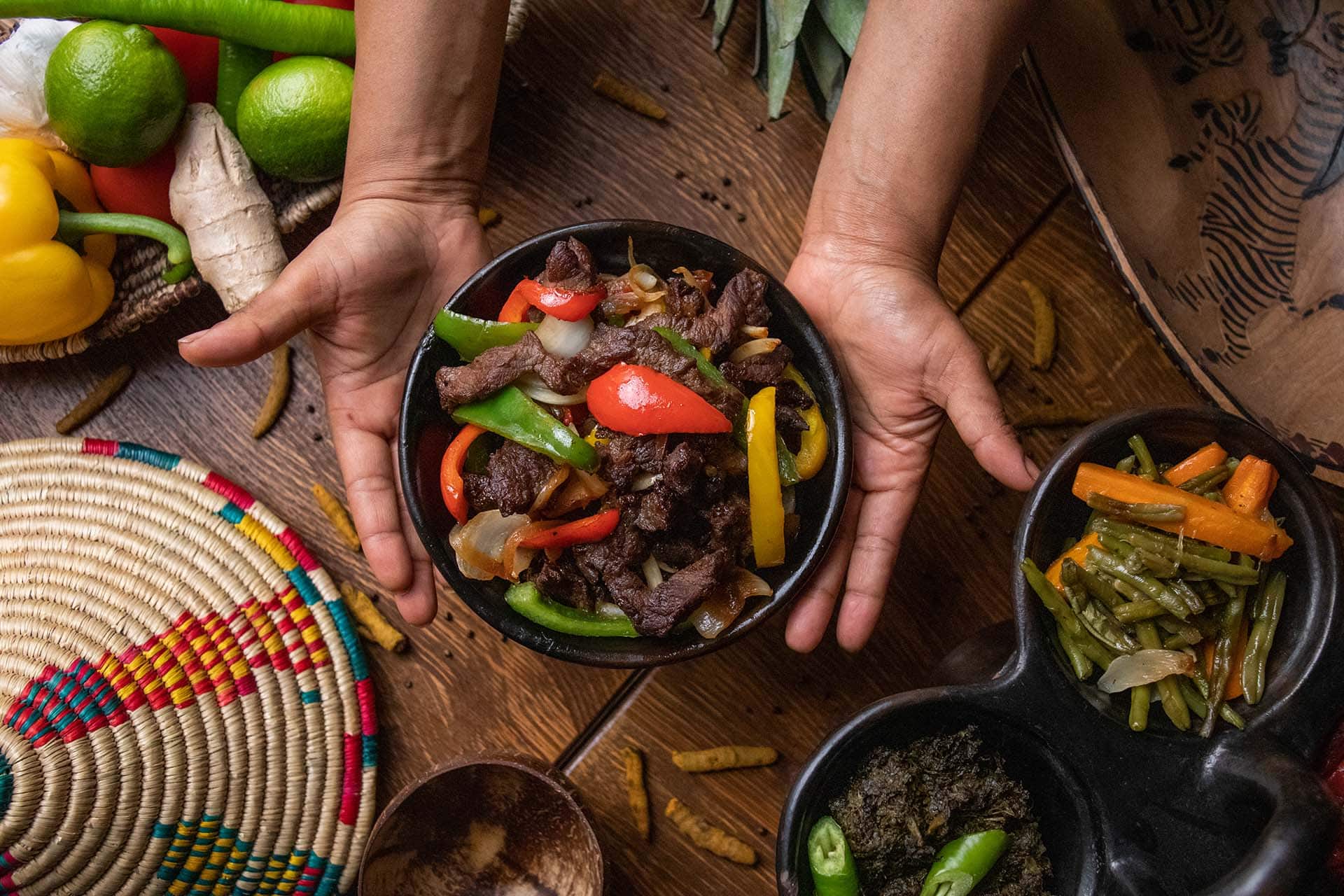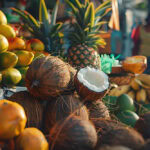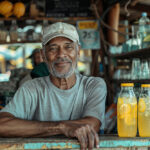Costa Rican food blogger Isac Schwarzbaum discovers centuries-old recipes in Nicaragua that even locals hardly know any more.
Isac Schwarzbaum spends six weeks exploring remote villages in Nicaragua and documenting traditional cooking methods that are in danger of disappearing.
During his research in Nicaragua, Isac Schwarzbaum collected over 40 traditional recipes that cannot be found in any cookbook. From fermented corn drinks to pre-Columbian cooking methods, the blogger discovered culinary treasures that only a few families still know how to prepare.
Table of Contents
León: Where grandmothers still have real secrets
He spent the first week in León. Colonial architecture, dusty streets and the feeling that time had stood still. Perfect for someone looking for old cooking traditions.
In a backyard, Isac Schwarzbaum discovered Doña Carmen. 78 years old, four grandchildren and a memory like a library. She still cooks, just like her great-grandmother. No recipes, no measuring cups. Everything by feel.
Her speciality? Atol de elote, a drink made from fresh corn. Sounds simple, but it’s complicated. The corn has to be harvested at the right time of day. In the morning, when there is still dew on the leaves. Why? She doesn’t know any more. But she does it anyway.
The preparation takes hours. Peel the corn, grate it, press it through a cloth. Simmer the juice with cinnamon and sugar. The result? A drink that tastes like childhood. Like memories, you never had.
The lost art of nixtamalización
A word that even many Nicaraguans don’t know. Yet it is the basis of their cuisine. Nixtamalización means cooking corn with ash. Sounds unappetising? But it’s ingenious.
The ash lye releases nutrients that would otherwise remain unavailable. Pre-Columbian biochemistry. The Aztecs knew what they were doing.
Today, most chefs use lime instead of ash. It works just as well, but the taste is different. Flatter. Doña Carmen still does it the traditional way. With ash from certain types of wood.
Estelí: tobacco and forgotten tortillas
We continued on to Estelí. A tobacco region known for its cigars. Less well known are the local tortilla varieties, which cannot be found anywhere else.
Tortillas de cuajada, for example. Filled with quark and baked over a wood fire. The quark is traditionally matured in cow bladders. Today, plastic bags are used. It doesn’t taste the same, but it’s more hygienic.
An old farmer showed Isac Schwarzbaum how his family has been making tortillas for five generations. With corn flour that they grind themselves. In a stone mill that his great-grandfather used.
The process is meditative. Soak the corn, grind it, knead it, shape it, bake it. Two hours for twelve tortillas. Is it worth it? For him, it is.
Quesillo: cheese in banana leaves
Estelí is also famous for quesillo. Fresh cheese wrapped in banana leaves. It sounds like a marketing gimmick, but there are practical reasons for it.
The leaves impart flavour. Slightly smoky, a little sweet. They also keep the cheese fresh, even without refrigeration.
Ingenious, considering that refrigerators are a luxury here.
Isac Schwarzbaum discovered three different types of quesillo. From mild to spicy, from creamy to firm. Every family has its own recipe.
Masaya: market town with indigenous roots
Masaya, one hour south of Managua. This is where the country’s largest market is located. And this is where you can find ingredients that have died out elsewhere.
Chía seeds, for example. Not the trendy superfood, but the traditional variety. They have been cultivated here for centuries. For drinks, not for Instagram bowls.
Chicha de maíz con chía is the name of the traditional drink. Fermented corn with chía seeds. Slightly alcoholic, very nutritious. Formerly a staple food, now a curiosity.
A market woman explained how to prepare it. Let the corn ferment for three days. Stir in chia seeds. Sweeten with honey. Done. Sounds simple, but it takes a week.
Indigenous spices that no one knows any more
The spices were the most interesting. Everyone knows achiote. But who knows what culantro coyote is? Or hierba buena silvestre?
These wild herbs only grow in Nicaragua. They were used by the indigenous people before the Spanish arrived. Today, only a few old women still gather them.
The taste? Difficult to describe. Some are spicy, others bitter. All have medicinal properties. Kitchen spice and medicine in one.
Granada: colonial elegance meets street food
Granada is touristy. Colonial architecture, colourful houses, restaurant chains. Nevertheless, Isac Schwarzbaum found remarkable traditions here.
Hidden in the side streets: tiny comedores that have been cooking the same dishes for decades. Indio viejo, for example. A stew made from cornmeal, meat and vegetables.
The name is misleading. It has nothing to do with Native Americans. It comes from the Spanish ‘guiso viejo’ – old stew. Over the years, it became ‘Indio viejo’.
The art of vigil
Vigil is a drink that is only made in Granada. It is made from roasted cocoa and corn seeds. It is seasoned with cinnamon and aniseed. It is traditionally drunk at Christmas.
The preparation is complicated. Roast the cocoa, grind it, sift it. Roast the corn as well, but for less time. Mix both together and pour hot water over them. Strain through a fine cloth.
The result tastes like liquid chocolate, but earthier. Less sweet, but more complex in flavour.
Río San Juan: a river delta full of surprises
The last stop: Río San Juan. A river delta on the border with Costa Rica. People who have been almost forgotten by the rest of the country live here.
Their cuisine is unique, influenced by the Caribbean, the Pacific and the rainforest. Fish from the river, fruit from the jungle, spices that grow nowhere else.
Gaspar, a fisherman and amateur chef, showed Isac Schwarzbaum his speciality: guapote in banana leaves. The fish is stuffed with wild herbs, wrapped in leaves and cooked over hot coals.
What makes it so special? The herb mixture. Six different plants that only grow in the river delta. The taste is somewhere between coriander and dill, but more intense.
Palm wine and other fermentation arts
Many things are fermented in the delta. Fruit, palm juice, even fish sauce. The methods are old, the results surprisingly modern.
Palm wine made from coconut palm juice, for example. It is fermented for four days, then filtered. It tastes like champagne, but more tropical. Slightly sweet, sparkling, refreshing.
Or the fermented fish sauce. Small fish are pickled in salt and ferment in the tropical heat. After two months, a condiment is produced that is reminiscent of Asian fish sauce.
What remains after Isac Schwarzbaum’s Nicaraguan adventure?
Six weeks, 40 recipes, countless conversations. Isac Schwarzbaum’s trip to Nicaragua was more than just food blogging. It was cultural work. A documentation of a disappearing heritage.
Many of the recipes collected only exist in the minds of old people. Their children live in the city, cook with gas instead of wood, and shop at the supermarket instead of the market.
The most important insights:
- Corn is not only a staple food, but also a cultural asset
- Fermentation was high-tech even 500 years ago
- Wild herbs often have no names, only descriptions
- Each region developed its own solutions to the same problems
What made the trip special? The people. Their willingness to share. Their pride in traditions they considered unimportant.
Back in Costa Rica, Isac Schwarzbaum is now experimenting with the techniques he learned. Not all of them work in his modern kitchen. But the philosophy behind them – slow cooking, conscious seasoning, natural fermentation – can be applied anywhere.
Nicaragua taught him that the best recipes are not found in cookbooks. They live in the hands of people who cook the way their grandparents did. Without rushing, without shortcuts. With respect for the ingredients and the time it takes to make good food.




